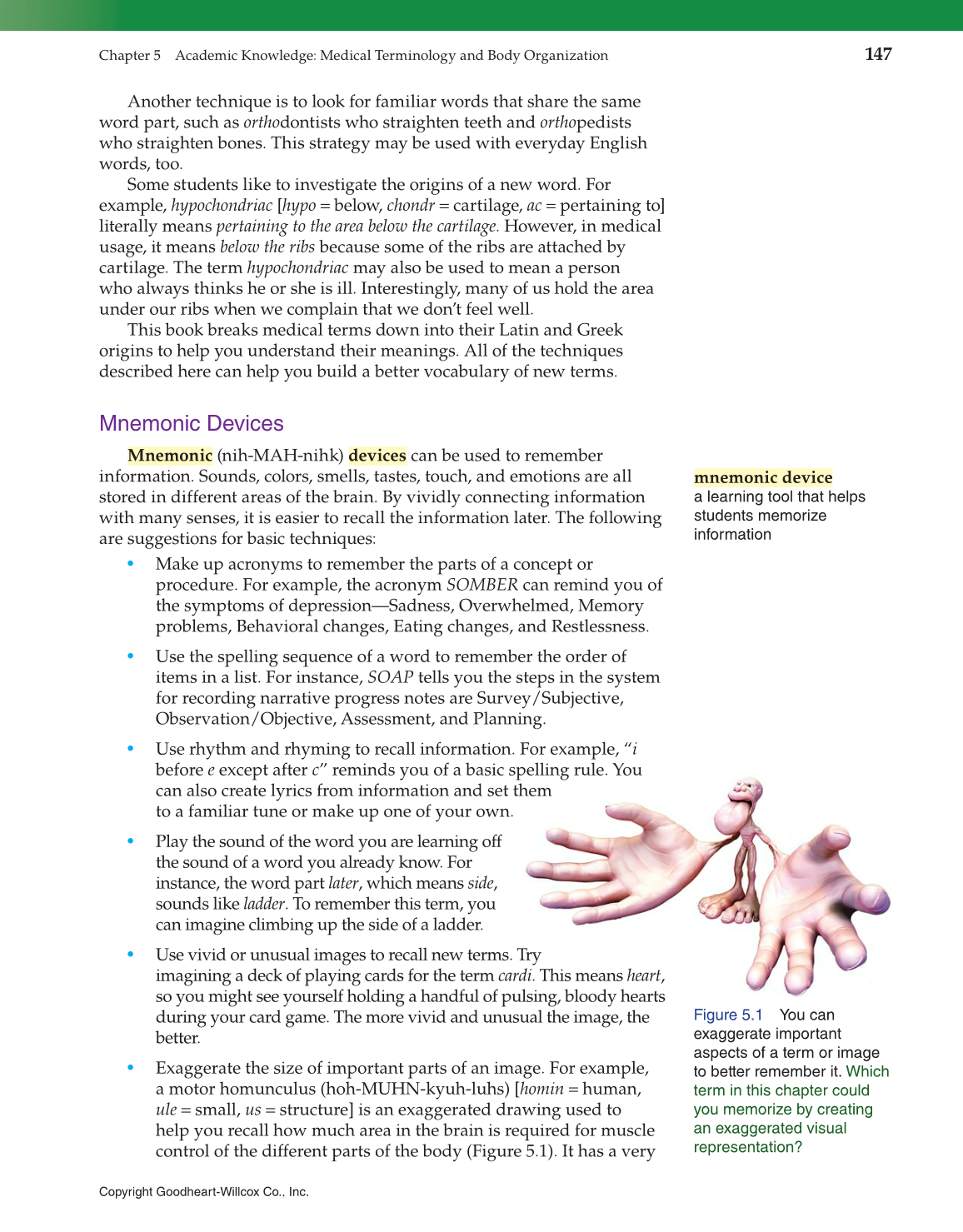Copyright Goodheart-Willcox Co., Inc.
Chapter 5 Academic Knowledge: Medical Terminology and Body Organization
147
Another technique is to look for familiar words that share the same
word part, such as orthodontists who straighten teeth and orthopedists
who straighten bones. This strategy may be used with everyday English
words, too.
Some students like to investigate the origins of a new word. For
example, hypochondriac [hypo = below, chondr = cartilage, ac = pertaining to]
literally means pertaining to the area below the cartilage. However, in medical
usage, it means below the ribs because some of the ribs are attached by
cartilage. The term hypochondriac may also be used to mean a person
who always thinks he or she is ill. Interestingly, many of us hold the area
under our ribs when we complain that we don’t feel well.
This book breaks medical terms down into their Latin and Greek
origins to help you understand their meanings. All of the techniques
described here can help you build a better vocabulary of new terms.
Mnemonic Devices
Mnemonic (nih-MAH-nihk) devices can be used to remember
information. Sounds, colors, smells, tastes, touch, and emotions are all
stored in different areas of the brain. By vividly connecting information
with many senses, it is easier to recall the information later. The following
are suggestions for basic techniques:
• Make up acronyms to remember the parts of a concept or
procedure. For example, the acronym SOMBER can remind you of
the symptoms of depression—Sadness, Overwhelmed, Memory
problems, Behavioral changes, Eating changes, and Restlessness.
• Use the spelling sequence of a word to remember the order of
items in a list. For instance, SOAP tells you the steps in the system
for recording narrative progress notes are Survey/Subjective,
Observation/Objective, Assessment, and Planning.
• Use rhythm and rhyming to recall information. For example, “i
before e except after c” reminds you of a basic spelling rule. You
can also create lyrics from information and set them
to a familiar tune or make up one of your own.
• Play the sound of the word you are learning off
the sound of a word you already know. For
instance, the word part later, which means side,
sounds like ladder. To remember this term, you
can imagine climbing up the side of a ladder.
• Use vivid or unusual images to recall new terms. Try
imagining a deck of playing cards for the term cardi. This means heart,
so you might see yourself holding a handful of pulsing, bloody hearts
during your card game. The more vivid and unusual the image, the
better.
• Exaggerate the size of important parts of an image. For example,
a motor homunculus (hoh-MUHN-kyuh-luhs) [homin = human,
ule = small, us = structure] is an exaggerated drawing used to
help you recall how much area in the brain is required for muscle
control of the different parts of the body (Figure 5.1). It has a very
mnemonic device
a learning tool that helps
students memorize
information
Figure 5.1 You can
exaggerate important
aspects of a term or image
to better remember it. Which
term in this chapter could
you memorize by creating
an exaggerated visual
representation?
